The first hyacinths of the season are emerging in the garden.
We are officially over the hump of winter and it’s all downhill to spring.
Plenty of preparation to be done before then, so let’s get started.
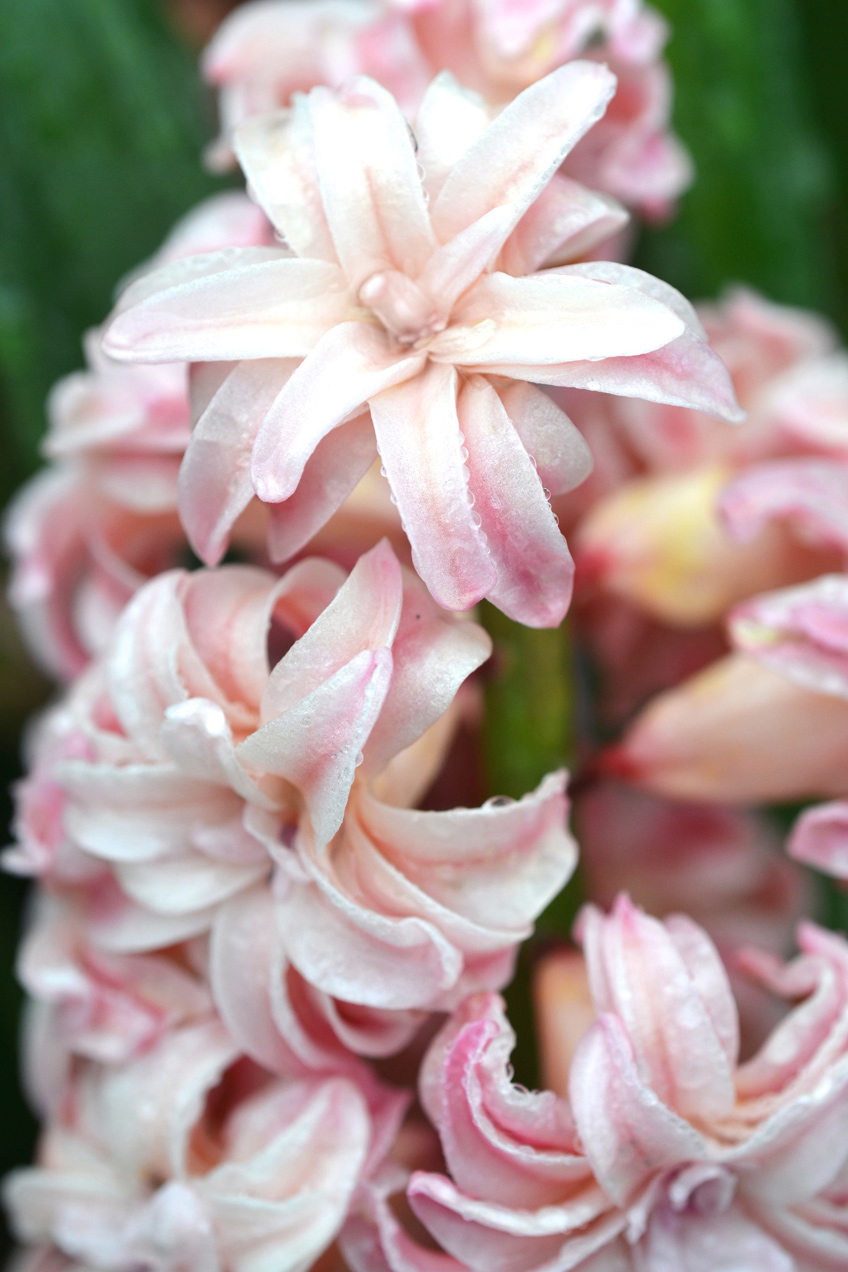
Just one stem of hyacinth has enough powerfull fragrance to fill an entire room. Photo - Robin Powell
It’s time to
All over
Attend to indoor plants: dust leaves, top up potting mix, or repot if necessary. Rotate the pot too – the plant will appreciate sunlight from a new angle.
Visit gardens to get winter plant inspiration, borrow some great ideas, then go shopping.
Cool, cold and frosty
Keep shade cloth free of leaf litter to ensure the health of the plants below.
Spray with caffeine spray, or scatter snail pellets to keep snails and slugs at bay.
Somewhere in the middle
Deadhead camellias.
Aerate lawns using a garden fork. An application of watered-in dolomite lime will sweeten the soil (and neutralise the acid profile of fertilisers).
Brissie and around
Increase plant numbers by taking cuttings of frangipani and roses.
Cut back carambola trees. They can be heavily pruned so don’t hold back!
Remove fast-growing weeds before they have a chance to set seed.
Way up north
When planting in the dry season, add compost to the soil and renew mulch to retain moisture.
Plant a green manure and dig in to the garden bed in 4 – 6 weeks.
When you have 10 minutes
Make use of deciduous plant prunings by using them as cuttings. Select plenty of healthy, firm, 30 cm long stems with fat buds. Dip the end of the cuttings
into hormone powder or gel (or try honey, as an alternative) and place in a dibbled hole in seed raising or propagating mix. Pot on when roots are
well-established, then swap with friends.
Bush Garden
Hardenbergia violacea ‘Bushy Blue’
There are many hardenbergia varieties available today mostly are climbers that will grow up bottlebrush, banksias and wattles or a formal wire structure.
But there are an increasing number of shrubby forms including this compact grower, H. ‘Bushy Blue’, which grows more like an upright small shrub to
50-70cmcm. It will survive light frost and prefer full sun to grow well. A light prune after late winter and spring flowering will keep the plant compact.
Can be used as a low hedge, in a container or mass planted in the garden.
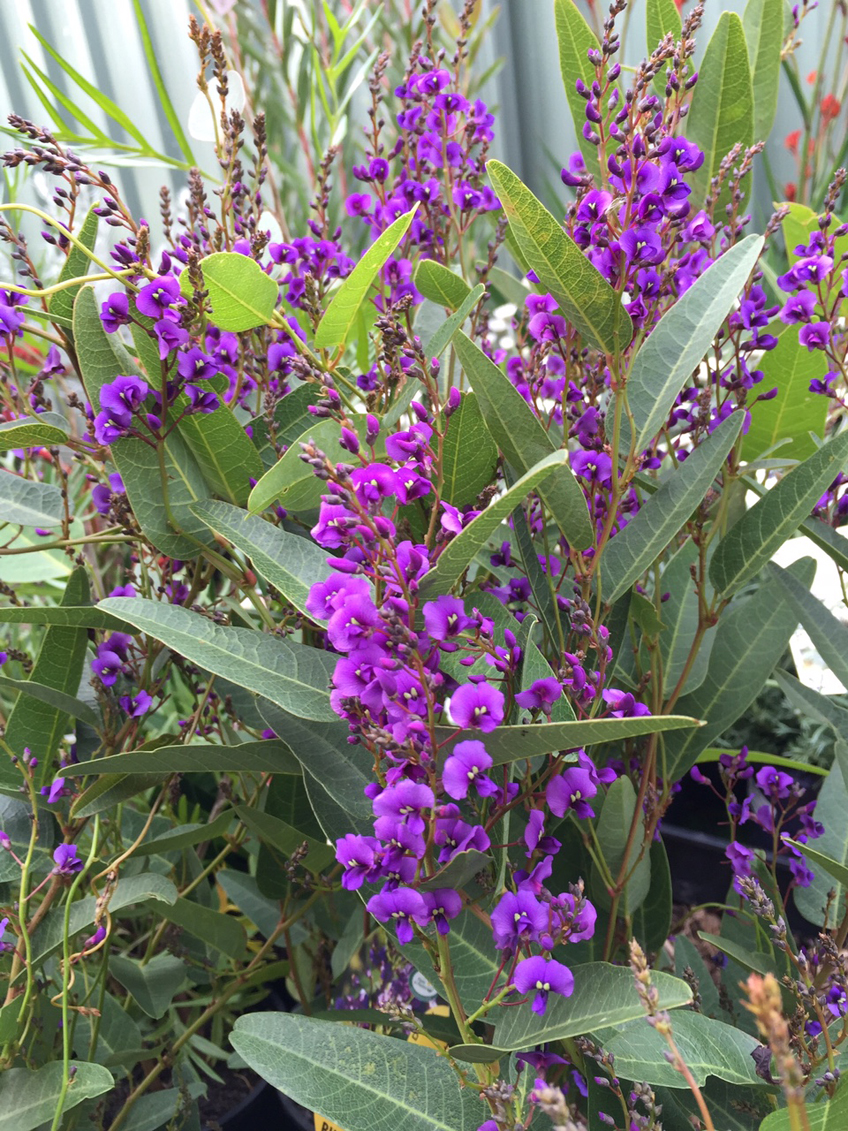
Hardenburgia 'Bushy Blue'. Photo - Graham Ross
Bugwatch
Leaf spot can be fungal disease or occasionally bacteria. Some appear on the tips only others all over the leaf blade. If a yellow halo appears around
the spot it is more concerning. There several tips worth following. Avoid watering with high fluoride water. Don't water from above. Only use quality
new potting mix. Maintain a regular balanced fertiliser. If condition worsens spray with a horticultural oil and organic fungicide. Remove worse effected
leaves. At the last stand discard the plant.
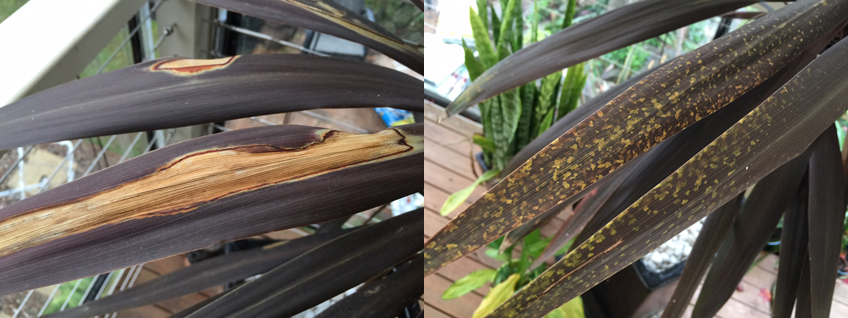
Left; This is sunburn, avoid watering leaves in pots where the foliage is exposed to direct sunlight. Right; Leaf spot can be fungal disease or occasionally bacteria
Garden News
Ted Bailleau on the 5000 Poppies Project
We have all seen the images from the 5000 Poppies Project Chelsea Hospital display. Phillip Johnson’s design for the project was brilliant in its simplicity
and dramatic in its impact.
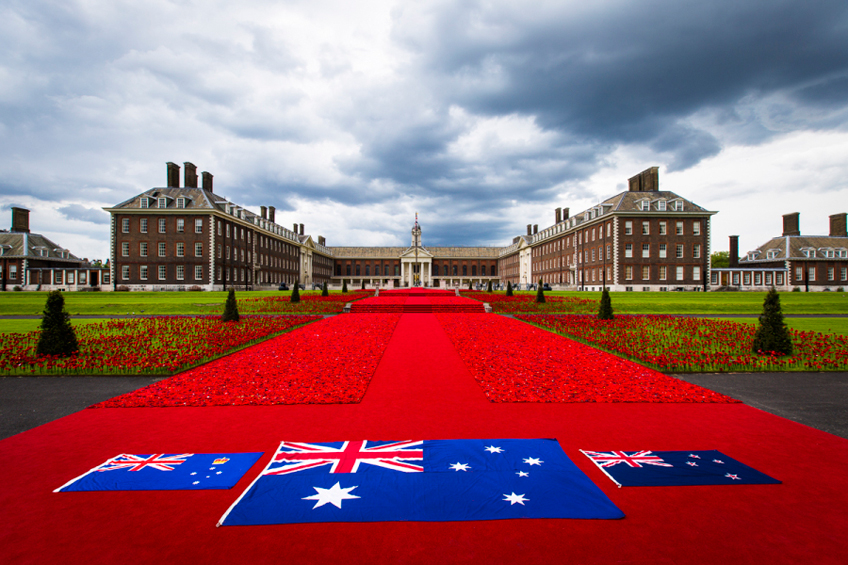
View to the Royal Hospital Chelsea over the 5000 Poppies display
Working hard in the background since the very beginning of the project is my guest on air this morning, Chairman of the Victorian Anzac Centenary Committee,
former Premier of Victoria; the Hon. Ted Baillieu.
Ted has called the 5000 Poppies Project the most significant community arts project since the comforts program undertaken after the troops enlisted in
1915, where the families and community groups sent comfort items, such as woollen socks and jumpers to soldiers at the front lines.
Ted told us that the 5000 Poppies Project display was "One of the most amazing things I've ever been involved with. There were a lot of tears. Very personal
and moving. An extraordinary tribute."
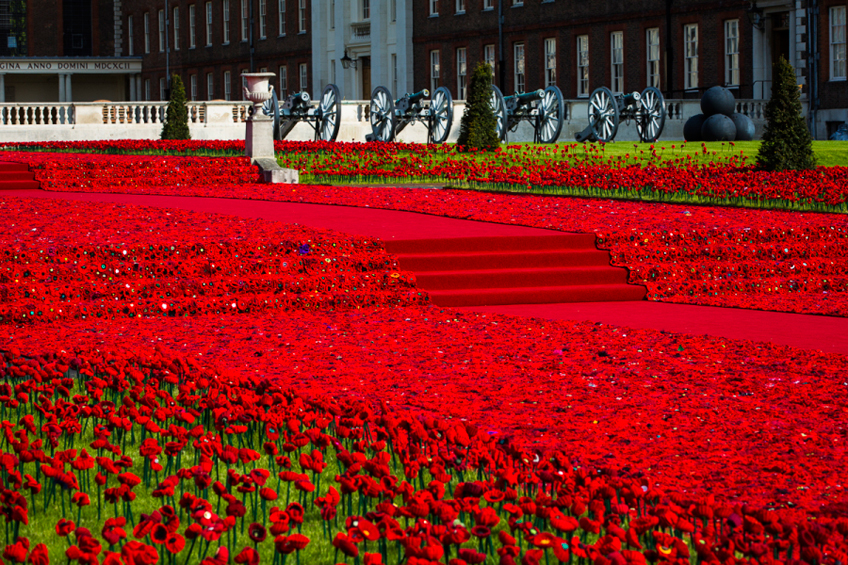
300,000 knitted poppies went into this display, and that number has now grown to around 500,000 thanks to contributions from supporters all over the world.
This month, 5000 Poppies along with Phillip Johnson Landscapes will be planting approximately 26,500 of our beautiful stemmed poppies in Fromelles at Australian
Memorial Park (Cobbers) to mark the Centenary Commemoration of the Battle of the Somme.
Ted has paid tribute to the team who make this project possible, honouring the sacrifice of those who served. We thank Ted for his hard work, and congratulate
the team on the success of this moving tribute.
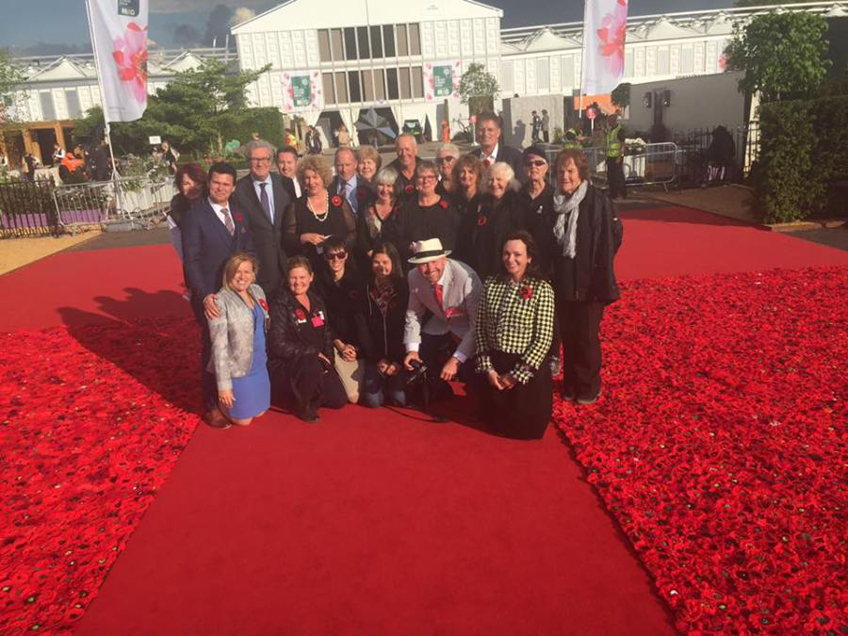
The fabulous 5000 Poppies team, and Ted being humble, hiding in the background
Want to see more of the 5000 Poppies display from the 2016 Chelsea Flower Show? Check out the blog, Australia’s 5000 Poppies hits the International Stage
Images thanks to 5000poppies
Nick Hansa from Fairhill Native Plants and Botanic Gardens talks grevilleas
Nick has seen the explosion of grevilleas that have come to market since the ‘70’s. It’s his life’s work. And Nick’s nursery, Fairhill Native Plants, is at the forefront of grevillea cultivar
production in Australia.
A passion for Australian native plants inspired Nick’s parents, Alex and Barbara Hansa to move up to the Sunshine Coast Queensland and start one of the
first Australian native plant nurseries in 1975.
With the help of groups like SGAP the plant list grew over time to be the thousands of plants that are available today from rainforest plants, flowering
shrubs like Banksia, Callistemon, Grevillea, Leptospermum, to grasses and sedges and even some of the Kangaroo Paw that will put up with humid weather.
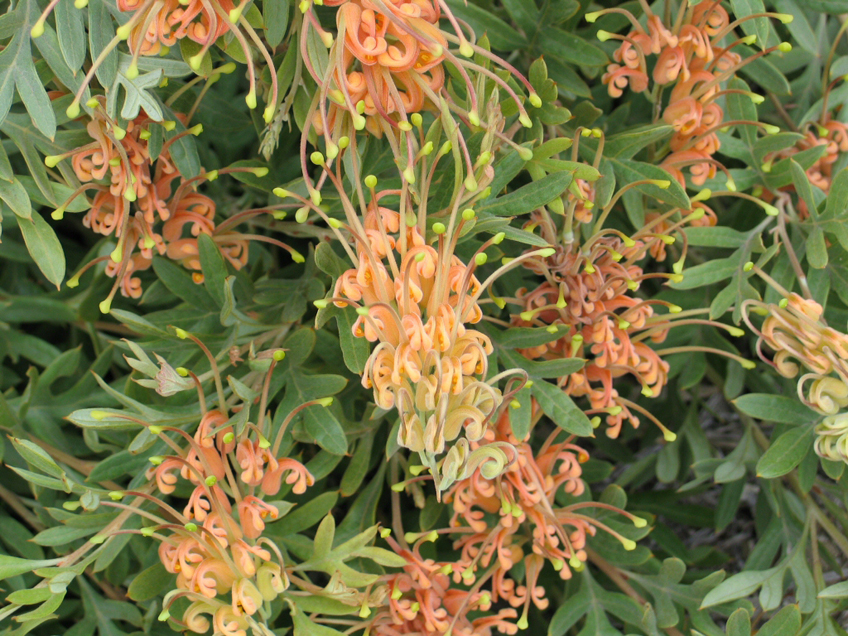
Grevillea 'Amber Blaze'. Photo - Angus Stewart
At first most of the plants grown were propagated form seed. But to improve the range available Fairhill started grafting, allowing for the introduction
of some of the dry country Grevilleas into subtropical and tropical gardens. Grafting Grevilleas onto a hardy rootstock also allowed them to be grown
in a wider range of soil types.
Although most of the varieties of Australian native plants that we enjoy today are either selected form the wild or garden hybrids, there has been some
deliberate breeding. Through our breeding programs Grevillia Golden Lyre, Grevillea Cooroora Cascade, Grevillea Crowning Gold, Grevillea Ninderry Sunset
and Syzygium Bush Christmas have been introduced to the gardens around Australia. The selection of garden hybrids as well as deliberate breeding programs
will continue to ad to the huge range of Australian native plants that are enjoyed today. It can be quite rightly stated that there is an Australian
native plant available for any garden situation through plants introduced by Fairhill and other enthusiasts on top of the huge diversity of plants
selected from the wild.
Check out the range of grevilleas for sale at Fairhill, including ‘Amber Blaze’, or pay them a visit at 114 – 132 Fairhill Road, Yandina QLD
Come away with us
Garden Marlborough New Zealand with Michael McCoy
New Zealand’s gardens are amongst the best anywhere on earth. Throw in a warm kiwi welcome and Garden Marlborough, we have the perfect excuse to visit this beautiful region of the south island when the peony
and wisteria are just heavenly.
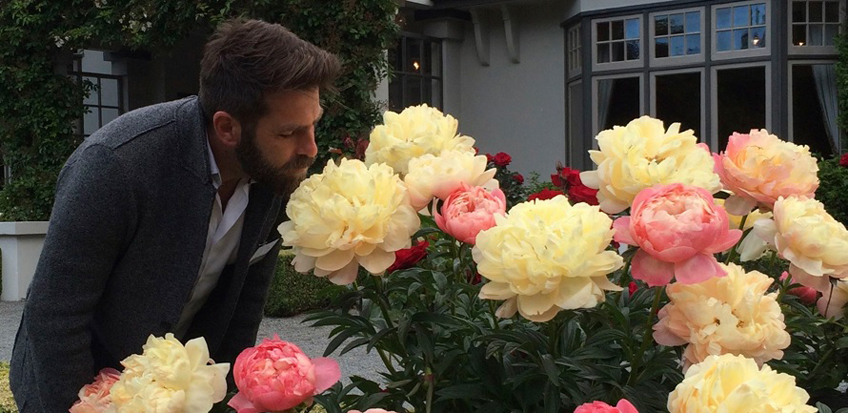
Wake up and smell the peonies!
For more information on this incredible tour go to the Ross Tours website,
or call Royce or Roslyn at Ross Tours to reserve your place on 1300 233 200 for more details on the tour.